Buckling in Truss chords
The buckling behavior of truss members is one of the important topics in the field of truss design.
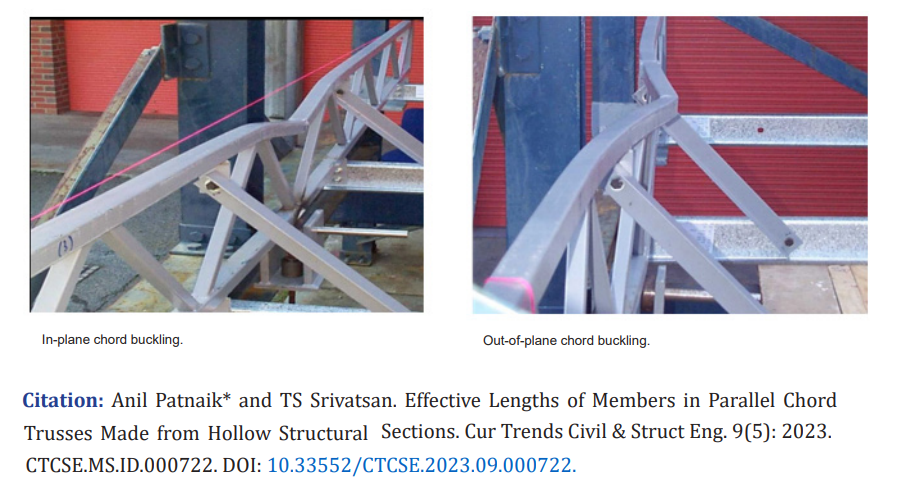
https://irispublishers.com/ctcse/pdf/CTCSE.MS.ID.000722.pdf (PDF Page 8-9/11)
Figure below shows the deflection values of both top chord and bottom chord due to top chord loading or bottom chord loading.
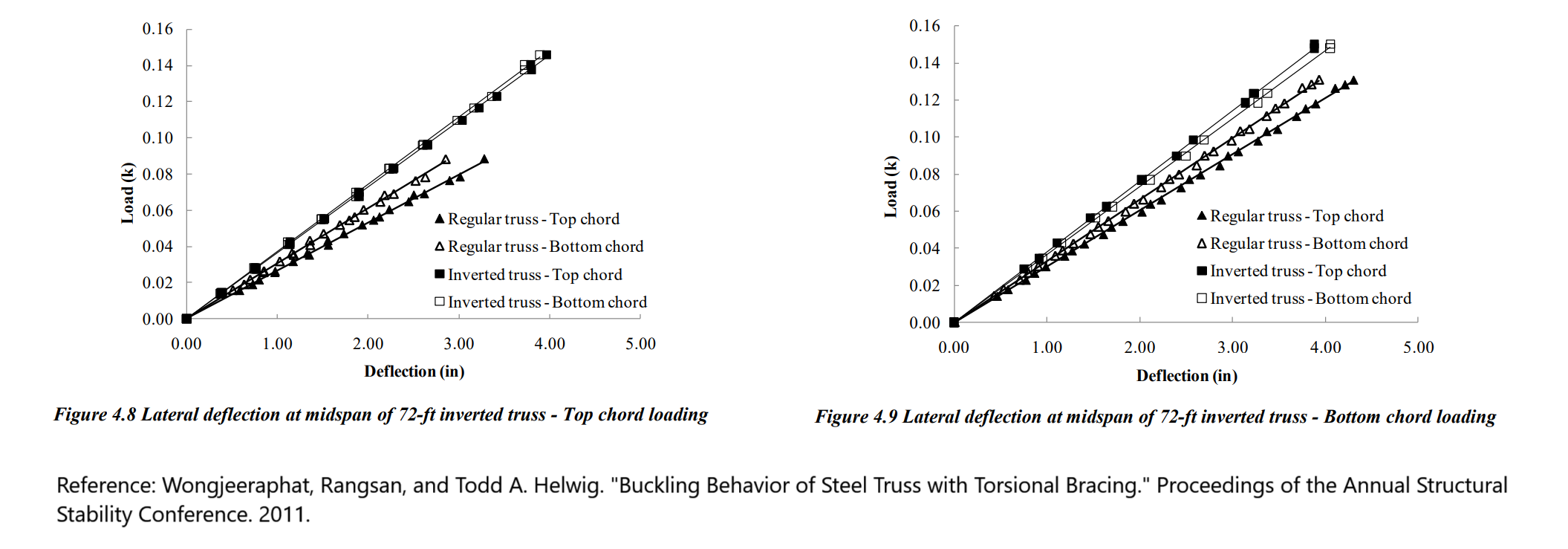
https://fsel.engr.utexas.edu/pdfs/Wongjeeraphat_Dissertation_20112.pdf (PDF Page: 116-117/347)
Therefore, engineers restraint the chord. Figure below shows the effect of restraining at top chord whole load is applied on top too.
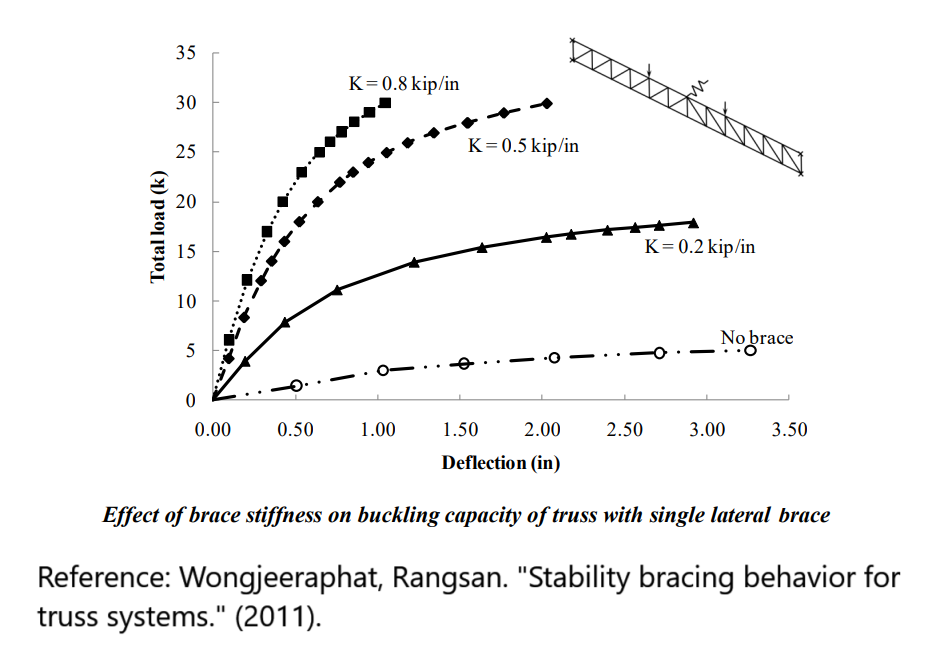
https://fsel.engr.utexas.edu/pdfs/Wongjeeraphat_Dissertation_20112.pdf (PDF Page: 136/347)
As can be seen in figure below the effects of the restraints are significantly high. However, the restraint of top side does not prevent the deflection of bottom side.
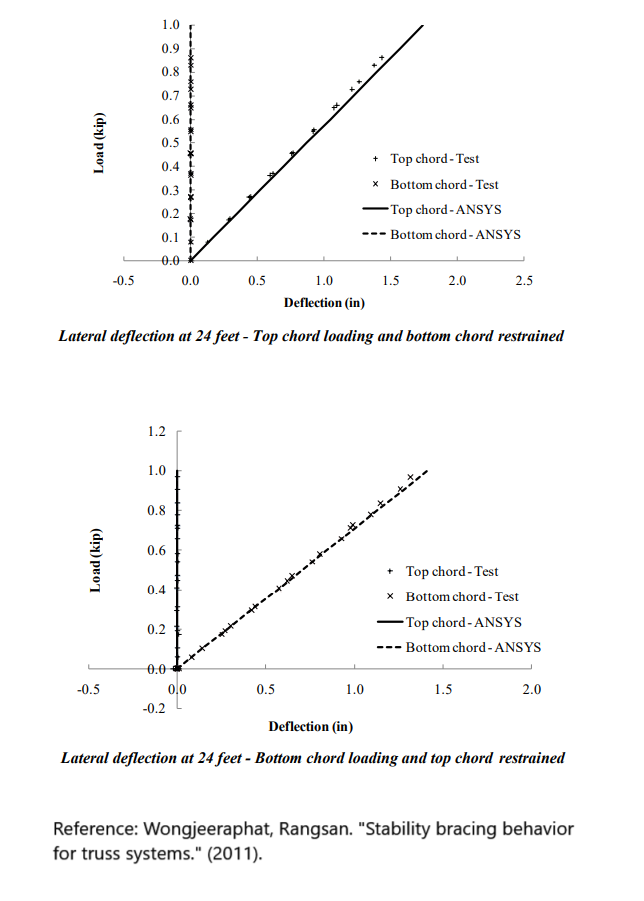
https://fsel.engr.utexas.edu/pdfs/Wongjeeraphat_Dissertation_20112.pdf (PDF Page: 305-306/347)
As a result, both the top and bottom chords are typically restrained using various techniques developed and adopted globally to enhance structural stability and performance..
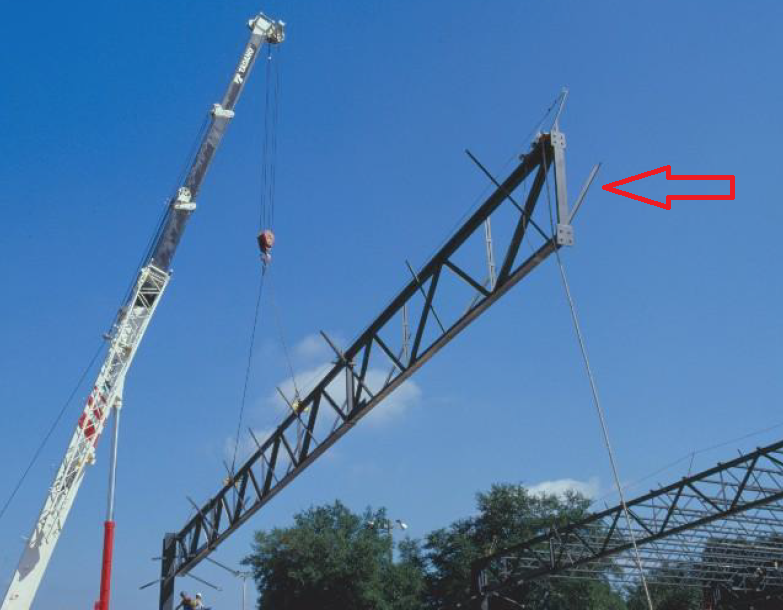
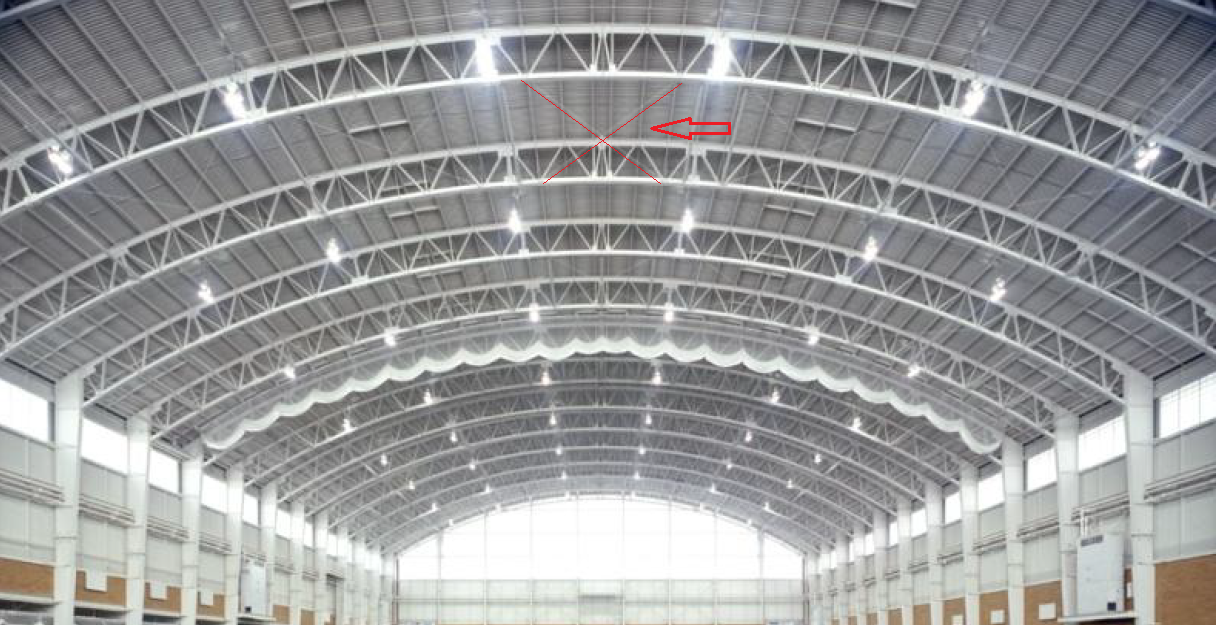
The buckling Lengths of the members are investigated and determined through different research:
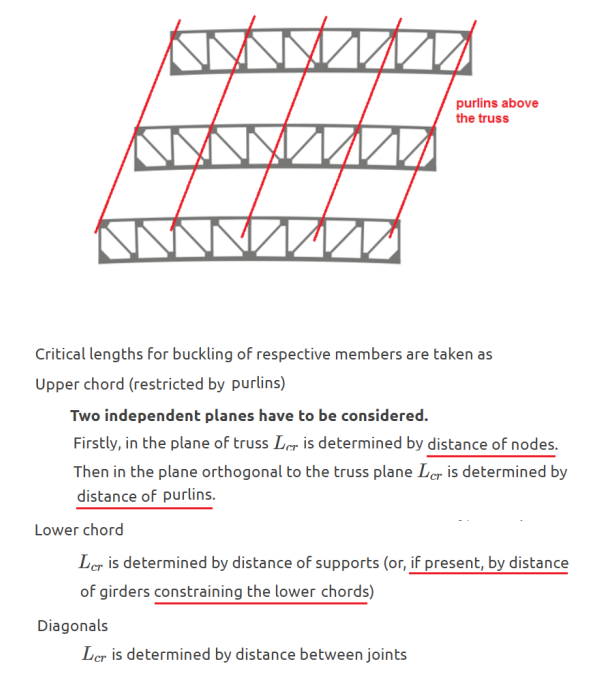
https://structural-analyser.com/domains/SteelDesign/TrussesAndBuckling/
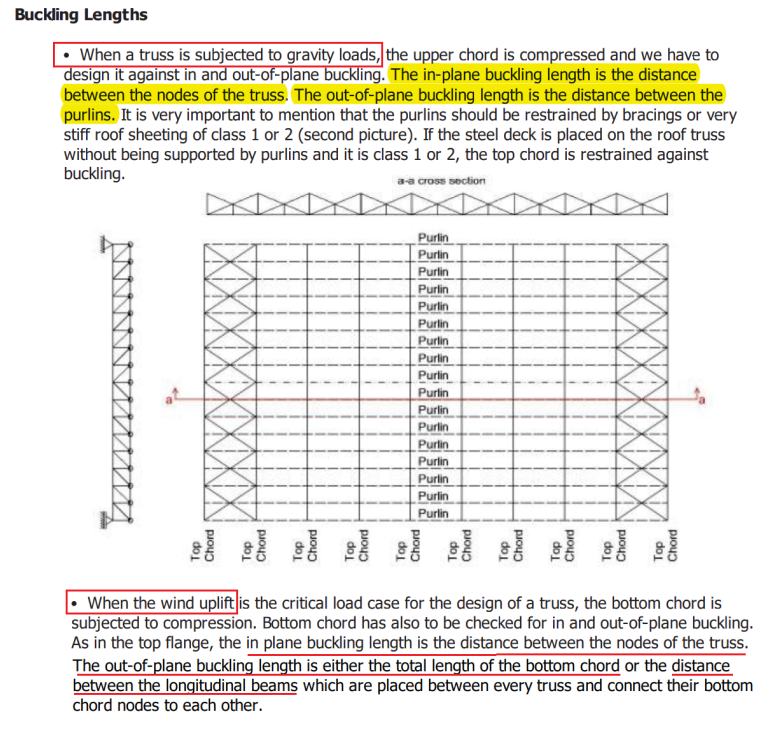
https://www.sefindia.org/forum/download.php?id=9914/1000 (PDF page: 3/4)
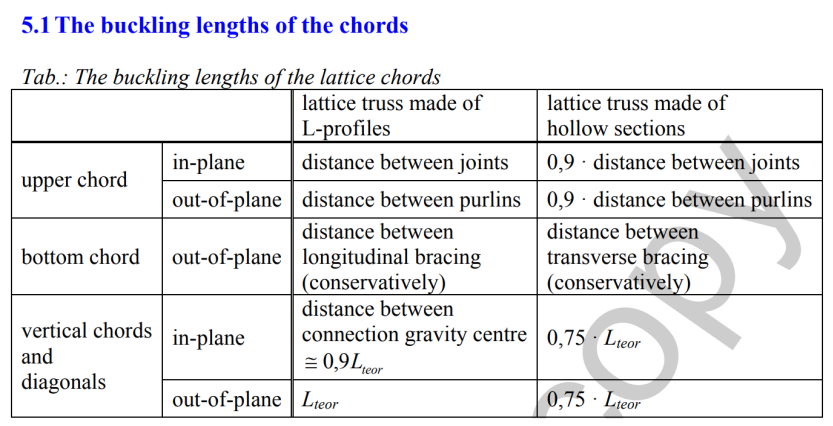
https://homel.vsb.cz/~ros11/EN/03%20Steel%20structures/03%20Steel%20hall%20-%20truss,%20design%20of%20chords.pdf (PDF Page: 1/12)
MkaPEB strategically considers the flange brace as an element used to prevent flexural-torsional buckling (FTB) and to decrease buckling length.
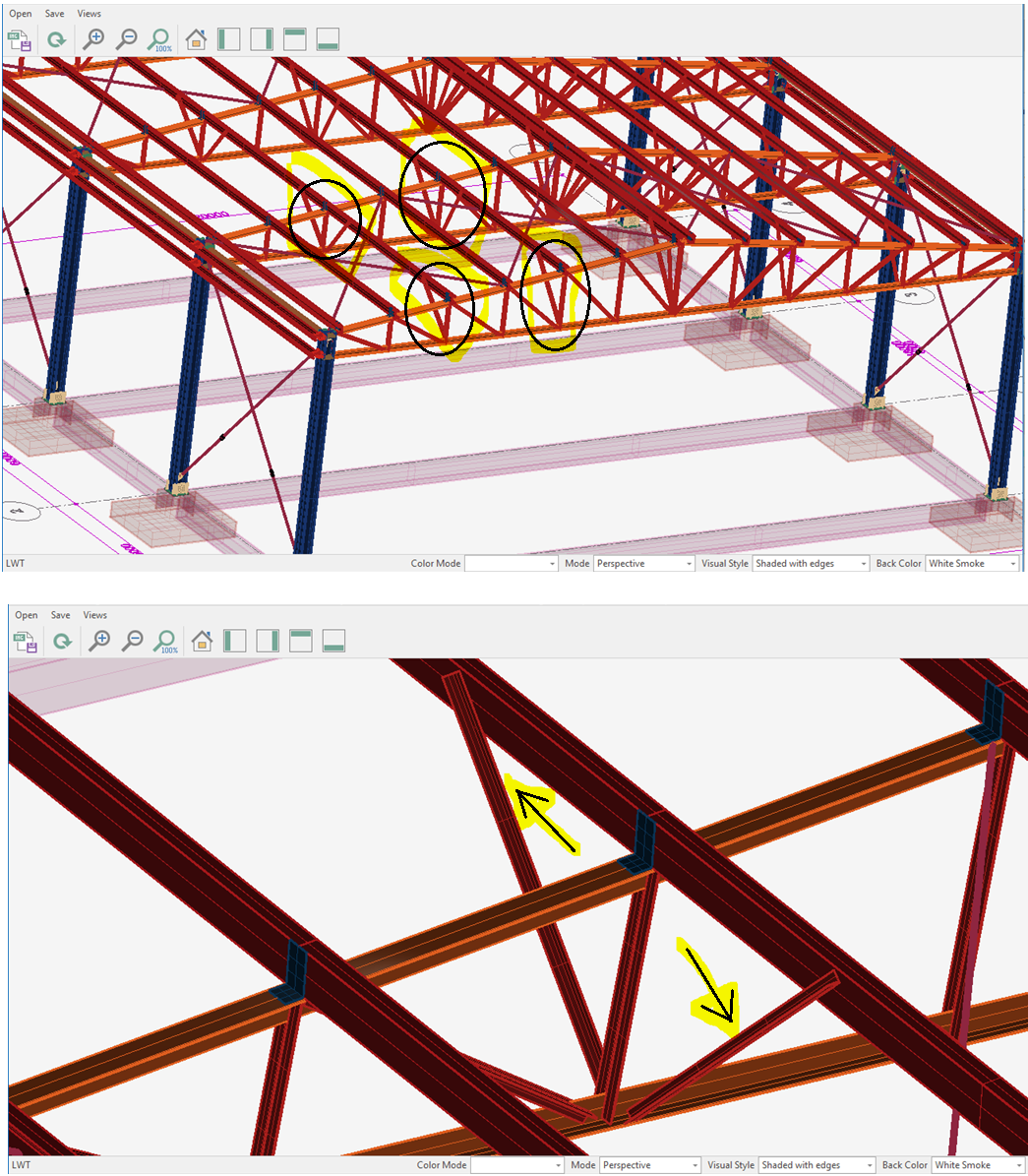
Created with the Personal Edition of HelpNDoc: Save time and frustration with HelpNDoc's WinHelp HLP to CHM conversion feature